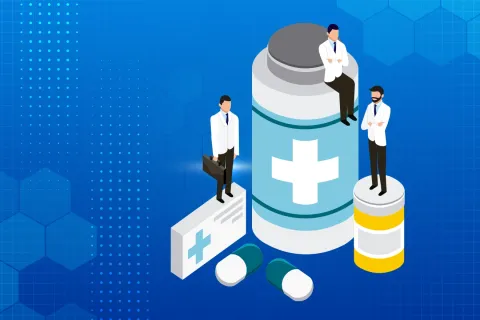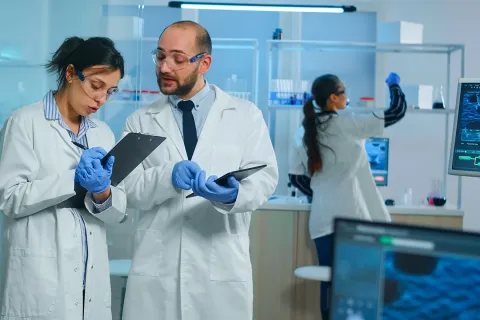In the highly regulated pharmaceutical industry, ensuring the integrity, quality, and compliance of computer systems used in manufacturing and quality control processes is critical. Two key methodologies for achieving this are Computer System Validation (CSV) and Computer Software Assurance (CSA). While both aim to ensure the reliability and compliance of software systems, they have distinct approaches and implications for pharma companies. This blog explores the main differences between CSV and CSA, focusing on their relevance to pharmaceutical compliance.
Understanding CSV
Computer System Validation (CSV) is a traditional approach used in the pharmaceutical industry to ensure that software systems perform as intended and comply with Regulatory requirements. CSV involves a comprehensive, documentation-intensive process that typically includes:
- Requirement Specifications: Defining what the system is intended to do.
- Risk Assessment: Identifying potential risks associated with the system.
- Validation Plan: Outlining the validation strategy and activities.
- Testing and Documentation: Conducting rigorous testing to verify that the system meets its specifications and documenting the results.
- Validation Report: Summarizing the validation activities and outcomes.
The primary goal of CSV is to provide documented evidence that a system is installed correctly, operates as expected, and produces accurate and reliable results.
Understanding CSA
Computer Software Assurance (CSA) is a newer approach proposed by the FDA to modernize the validation of computer systems. CSA emphasizes critical thinking, risk management, and the use of automation tools to streamline validation activities. Key elements of CSA include:
- Risk-Based Approach: Focusing on the highest-risk aspects of the system to ensure product quality and patient safety.
- Critical Thinking: Encouraging a more flexible, less documentation-heavy approach that relies on the expertise and judgment of the validation team.
- Leveraging Technology: Utilizing modern technologies and automated testing tools to improve efficiency and accuracy.
- Continuous Assurance: Implementing ongoing monitoring and maintenance to ensure compliance and system performance.
The main objective of CSA is to reduce the burden of documentation while maintaining or improving the quality and compliance of software systems.
Key Differences Between CSV and CSA
While CSV and CSA share the goal of ensuring compliant and reliable software systems, their approaches differ significantly. Here are the main differences:
- Approach to Risk Management:
- CSV: Involves a comprehensive risk assessment process, but often treats all risks equally, leading to extensive documentation.
- CSA: Prioritizes a risk-based approach, focusing on the most critical aspects of the system that impact product quality and patient safety.
- Documentation Requirements:
- CSV: Requires extensive documentation at every stage of the validation process, often resulting in a time-consuming and resource-intensive effort.
- CSA: Emphasizes critical thinking over excessive documentation, allowing for a more streamlined validation process without compromising quality.
- Use of Technology:
- CSV: Relies heavily on manual processes and documentation, with limited use of automated tools.
- CSA: Encourages modern technologies and automated testing tools to enhance efficiency and accuracy in the validation process.
- Flexibility:
- CSV: Follows a rigid, predefined process with strict adherence to protocols and documentation requirements.
- CSA: Offers more flexibility, allowing validation teams to use their judgment and expertise to determine the most effective validation approach.
- Focus on Continuous Improvement:
- CSV: Primarily focuses on initial validation, with less emphasis on ongoing monitoring and improvement.
- CSA: Promotes continuous assurance, encouraging regular monitoring and maintenance to ensure compliance and system performance.
Implications for Pharmaceutical Compliance
Adopting the right approach to computer system validation is crucial for pharmaceutical companies to maintain compliance with Regulatory requirements. Here’s how CSV and CSA impact compliance in the pharma industry:
- Regulatory Acceptance: CSV has been the industry standard for many years and is widely accepted by Regulatory bodies. However, CSA is gaining traction as Regulatory agencies recognize the need for more efficient and effective validation methods.
- Resource Allocation: CSV’s documentation-heavy approach can be resource-intensive, requiring significant time and effort. CSA’s streamlined process can free up resources, allowing companies to focus on other critical areas.
- Quality and Efficiency: While CSV ensures thorough validation, CSA’s risk-based approach leads to improved quality and efficiency by focusing efforts on the most critical aspects of the system.
- Adaptability: CSA’s flexible approach allows companies to adapt more quickly to changes in technology and Regulatory requirements, ensuring ongoing compliance and system performance.
Conclusion
CSV and CSA are essential methodologies for ensuring the reliability and compliance of software systems in the pharmaceutical industry. While CSV provides a thorough, documentation-heavy approach, CSA offers a more flexible, risk-based method that leverages modern technologies and critical thinking.
Pharmaceutical companies must carefully consider their specific needs and Regulatory requirements when choosing between CSV and CSA. By understanding the key differences and implications of each approach, companies can make informed decisions to maintain compliance, improve efficiency, and ensure the quality and safety of their products.
Contact Freyr today to learn more about how our validation and assurance services can help your pharmaceutical company navigate the complexities of CSV and CSA and achieve Regulatory compliance.










